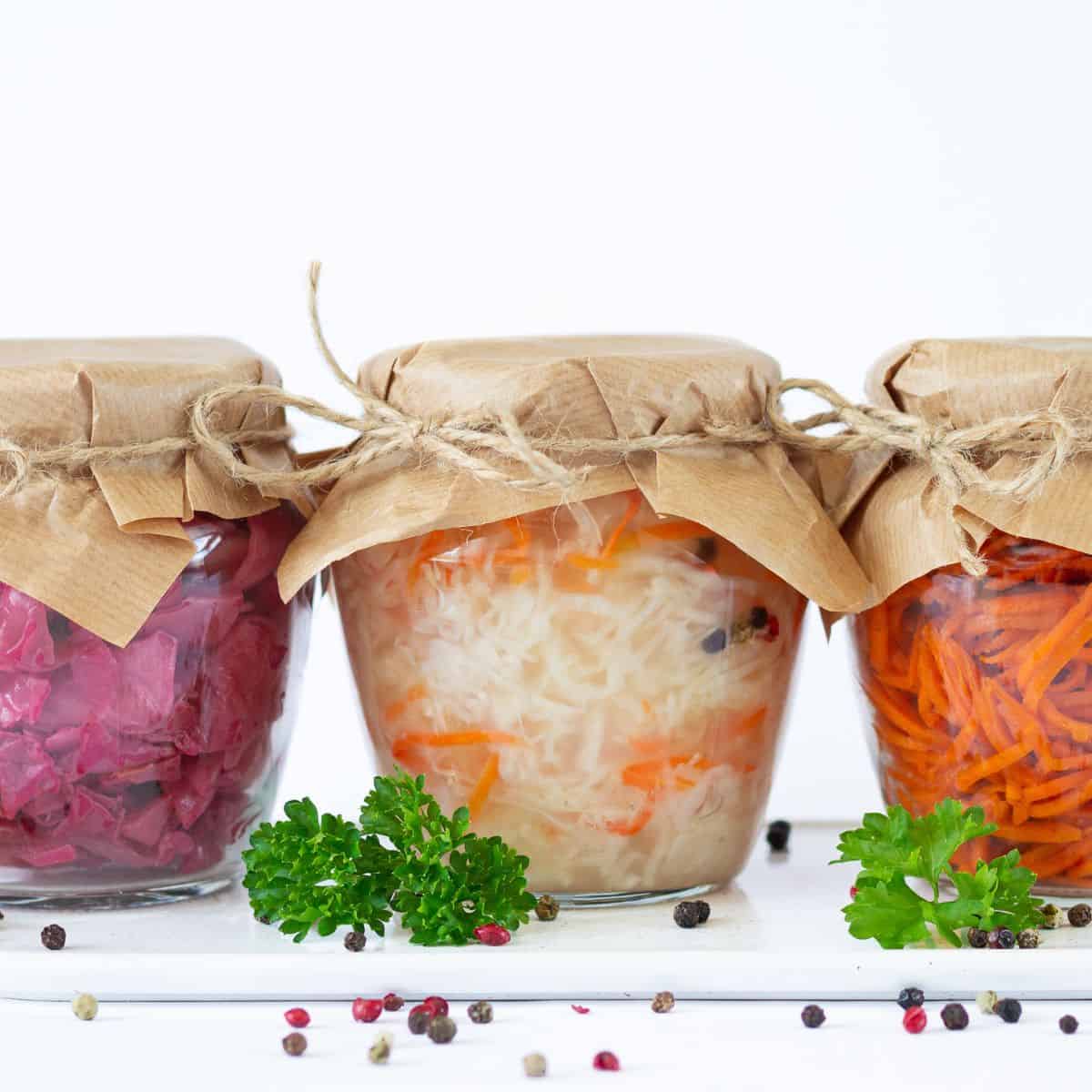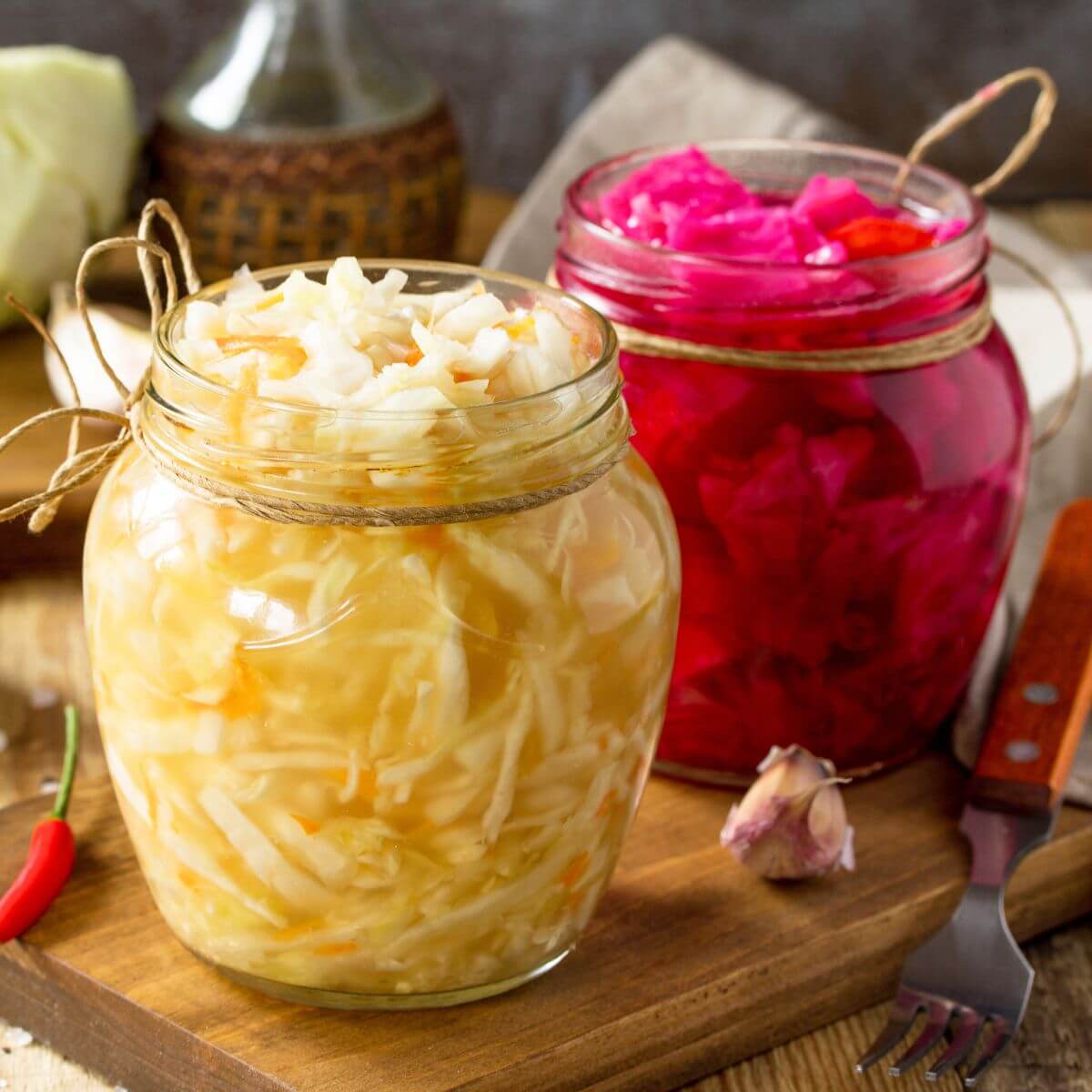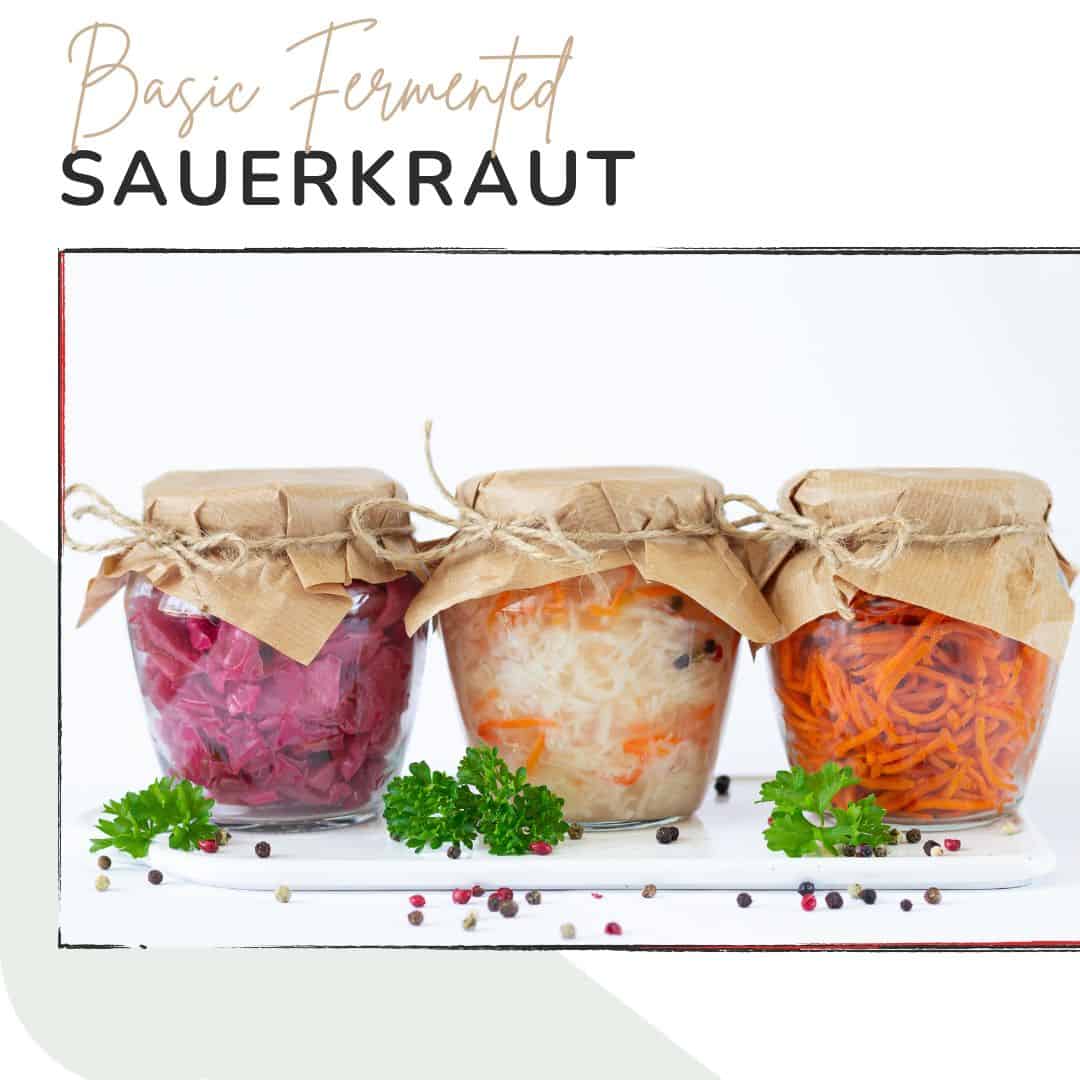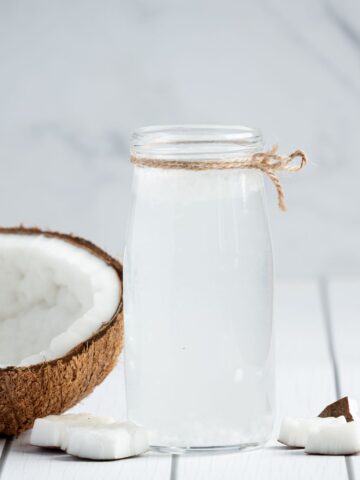Want to learn how to make fermented sauerkraut? It is so much fun, but it can also be daunting! You don’t want to do the wrong thing and make yourself sick, but you definitely want the amazing benefits that homemade ferments have to offer. Fermentation of cabbage into an easy basic sauerkraut recipe is so easy to learn.

Fear not, fermentation isn’t nearly as scary as it seems. The remarkable thing about fermenting your own food is that you can tell immediately when something’s not right. It’s not a guessing game like traditional canning.
Once you get the hang of it you’ll be hooked. Producing your own ferments is an art because no matter what you do every batch will turn out unique from the last.
Jump to:
💖 Why You'll Love This Fermented Sauerkraut Recipe?
Gut Health Benefits - Improved digestion, enhanced nutrient absorption and bioavailability.
Weight Management Support - Helps with the regulation of blood sugar levels, detoxification and weight management.
Reduce Inflammation - Probiotic bacteria enhance the diversity of gut microbes and decrease signs of inflammation.
Boosted Immunity- Helps strengthen the function of the immune system and has potential for reduction of food allergies.

🥬 The Basics of Fermentation: Salt + Vegetables + Environment
The role of salt is both protective and purposeful. It protects against harmful bacteria, while also stimulating osmosis. To make ferments like sauerkraut, salt is needed to draw the liquid out of the cabbage. This is so it has a brine to create magic in.
A common mistake beginners make is not to leave enough liquid above the vegetables to protect them from the elements of the outside world. I like to make a separate brine of 1 teaspoon sea salt to one cup of water. Then add some on top of my packed down vegetables.
Every fermented food relies on the same principles of salt, vegetables, and an environment free from oxygen, so those healthy bacteria can grow.
🧡 Learn How to Make a Basic Sauerkraut Recipe
Learn how easy it is to make a gut healthy sauerkraut recipe.

Basic Easy Sauerkraut Recipe
Equipment
Ingredients
- 1 head cabbage (Shite or red) or (can substitute with shredded carrots)
- 3 tablespoon sea salt (Non-iodized salt)
- water (Filtered is best)
Spices
- garlic, fresh
- ginger, fresh
- fennel seed
Instructions
- Chop the cabbage finely, you can use a food processor, a mandolin, or hand.
- Liberally coat the cabbage with salt and let it sit for a few minutes.
- Mix, pound and squeeze the cabbage to get as much water out of it as possible.
- This is when you would add your other vegetables and spices.
- Stuff mixture into mason jars. Push it down as much as possible to get rid of any air bubbles and make the salty brine rise to the surface. You want at least an inch of water above your vegetables at all times.
- You can use a weight to keep the kraut submerged. Some people used the actual “butt” end of the cabbage itself, a clean rock, or you can get fancy and buy a proper fermentation weight.
- Check your kraut every few days to ensure it’s still submerged.
- Let it ferment to your liking. I usually let mine go for 2 weeks to a month before popping it in the fridge.
LEAVE A RATING AND COMMENT
Please leave a rating and comment letting us know how you like this recipe.
Nutrition
The information shown is an estimate provided by an online nutrition calculator. Modify as needed and enjoy.
©EatYourNutrition. Content & photos are copyright protected. I love when you share this recipe with others. Please make sure you give credit to this site. Copying, pasting, & posting entire recipes onto social media is prohibited.
Share on FacebookIf you’re interested in getting healthy, restoring your digestion, and boosting your energy, check out my comprehensive program Restore your Gut Health. In the program, you get a ton of delicious, satisfying recipes, as well as strategies that will help rebuild your intestinal flora.
Or join me on my Facebook page, where I’ll share more information, tips, and recipes to help you live a happier, healthier life.
❤️ You Might Also Love These
Looking for other gut healing recipes like this? Try these:

😀 Let's Discuss How to Make Sauerkraut!
Fermentation of cabbage into an easy sauerkraut recipe is easy to learn. I hope you learned how easy it is to make fermented sauerkraut. Therefore, experiment with different vegetables. This is because the fermentation of cabbage or carrots into a delicious easy sauerkraut recipe is pretty easy to learn.
Let’s discuss this topic in the comment section below. I would also love to hear what you think, or take a photo and tag me @Eat_Your_Nutrition on Instagram. I love seeing your photos. #EatYourNutrition #LauraVillanueva
📚 Additional Resources
Also, for further reading and guidance on how to go about treating the root causes of gut inflammation, consider exploring the following resources:
Suspect you have a gut hormone imbalance or simply want to improve your gut and hormone health, download my guide, 10 Ways to Repair Your Gut Health.
– Want a simple recipe guide and anti-inflammatory meal plan packed with recipes to help lower inflammation? If you have inflammation issues, try this meal plan and recipes inside the Anti-Inflammatory Meal Plan.
– Support: Join my Restore Your Gut Health Fundamentals Program. Register here.






Leave a Reply